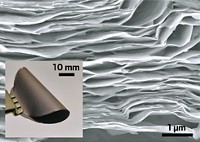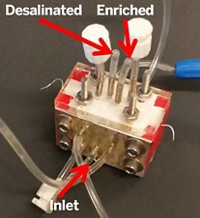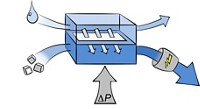Advertisement
Grab your lab coat. Let's get started
Welcome!
Welcome!
Create an account below to get 6 C&EN articles per month, receive newsletters and more - all free.
It seems this is your first time logging in online. Please enter the following information to continue.
As an ACS member you automatically get access to this site. All we need is few more details to create your reading experience.
Not you? Sign in with a different account.
Not you? Sign in with a different account.
ERROR 1
ERROR 1
ERROR 2
ERROR 2
ERROR 2
ERROR 2
ERROR 2
Password and Confirm password must match.
If you have an ACS member number, please enter it here so we can link this account to your membership. (optional)
ERROR 2
ACS values your privacy. By submitting your information, you are gaining access to C&EN and subscribing to our weekly newsletter. We use the information you provide to make your reading experience better, and we will never sell your data to third party members.
Environment
Patent Picks: Seawater Desalination Technologies
A look at recent patenting activity in seawater desalination technologies, brought to you by C&EN and CAS
by Mitch Garcia
August 28, 2015
| A version of this story appeared in
Volume 93, Issue 34
Approximately 70 million people around the world rely on desalination to meet their daily freshwater needs. The most common method of removing salts and contaminants from seawater is reverse osmosis, which involves forcing seawater under high pressure through a membrane that blocks ions from flowing through. However, this method consumes a lot of energy compared with transporting freshwater from elsewhere or using other less energy-intensive desalination methods. Here, we highlight three advances in seawater desalination technologies from the databases of Chemical Abstracts Service (CAS).
Capacitive deionization removes dissolved ions from seawater by applying a potential difference between two electrodes placed in the water. The electrodes attract ions and immobilize them on their surfaces. Over time, the electrodes become saturated with deposited ions, and in turn, the desalination efficiency decreases, necessitating frequent cleaning of the electrodes’ surfaces. A research team, led by Goran Jovanovic of Oregon State University, developed a prototype microfluidic capacitive deionization device that would require less maintenance by using nanostructured electrodes made from silicon dioxide (WO 2015089290). The new electrodes have a surface area that is 1,000 times as large as corresponding flat electrodes. This means the new electrodes can operate longer between cleanings. However, because of the small size of the microfluidic device, the desalinated water output is only 0.4 mL/minute per single electrode cell. Coinventor Christopher Loeb tells C&EN that the goal is to operate hundreds of thousands of devices in parallel for large-scale commercial applications.

In membrane distillation, heated water flows past a hydrophobic membrane that allows only water vapor to permeate. This vapor then gets condensed to produce freshwater. The hydrophobic membrane facilitates the desalination process by preventing liquid water from clogging the pores. To enhance the hydrophobicity of the membrane, scientists from New Jersey Institute of Technology—led by chemistry and environmental science professor Somenath Mitra—embedded nanodiamonds within a hydrophobic membrane consisting of polyvinylidene fluoride polymer (US 20150096935). The nanodiamonds are 2- to 8-nm-wide carbon particles that have a truncated octahedral architecture. The nanodiamond membranes pass water at twice the rate of unmodified ones while also removing 99.9% of the dissolved salt. Madhuleena D. Bhadra and Sagar Roy, coinventors of the technology, say it takes about one week to make the membranes from start to finish. Mitra tells C&EN that there has been significant interest and funding from the power industry for this technology and a similarly designed one that uses carbon nanotubes (US 20150001150).

Because reverse osmosis requires large amounts of energy, it is usually coupled to fossil-fuel or nuclear power plants. A team from Massachusetts-based energy company Resolute Marine Energy has developed a more environmentally friendly way to power the process. Their method converts the power carried by ocean waves into mechanical power to run a reverse-osmosis desalination device (WO 2014100674). Basically, the system uses a big paddle moved by waves to power a high-pressure water pump. Because wave power is a renewable energy source, the technology could be deployed to remote coastal communities to provide both clean water and energy. Earlier this month, the Department of Energy awarded two Systems Performance Advancement II awards to Resolute to continue its R&D efforts on this technology.
↑ Top
Jump to Topics:
- A Microfluidic Device That’s Easier to Maintain
- Using Nanodiamonds To Purify Waters
- Wave-Powered Desalination
Mitch Garcia wrote this month’s Patent Picks in collaboration with CAS. This feature reports on trends CAS scientists observe from patents in CAS databases. Please send comments and suggestions to patentpicks@acs.org.





Join the conversation
Contact the reporter
Submit a Letter to the Editor for publication
Engage with us on Twitter